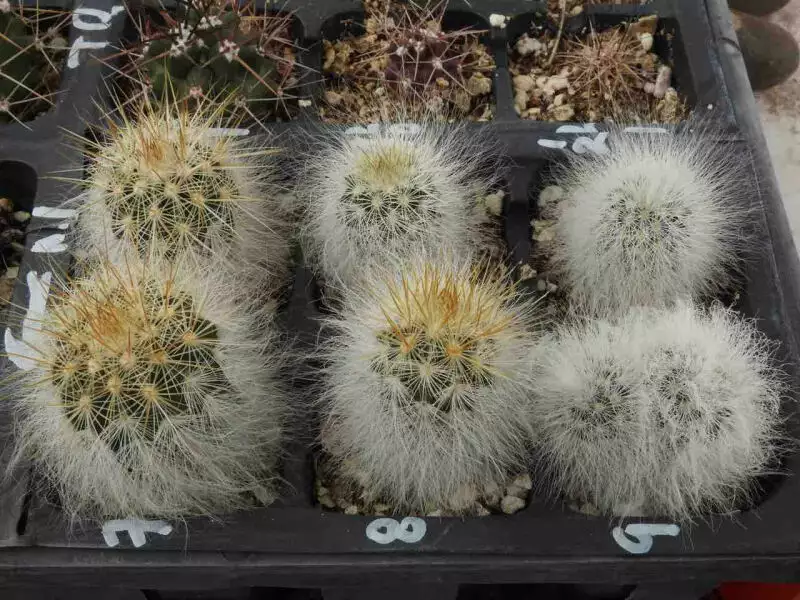Echinocereus russanthus neocapillus
I don't agree with the taxonomists that classify this species as a subspecies under russanthus. This is Echinocereus neocapillus. And now for some gee whiz comments on plants. This species has a very different appearance as a juvenile and as an adult. These six are from the same sowing. You can see the change in spination happening at the growing tip of the plant. That's the adult plumage, the orange stuff. The juvenile plant is very shaggy and fuzzy white. I used to think that the change had to do with age, but the more I see this phenomenon (other genera and species have such profound changes) the more I think it's a matter of size. That is, the size of the developing plant governs the change in spination. I'm going to try to examine the truth of this notion more rigorously. Logic seems to deny this idea, but logic can be a trap. Time for experiments. (Yes, the lower right seedling is undergoing dichotomous branching.) (26/32)
<<Prev
Index
Next>>

